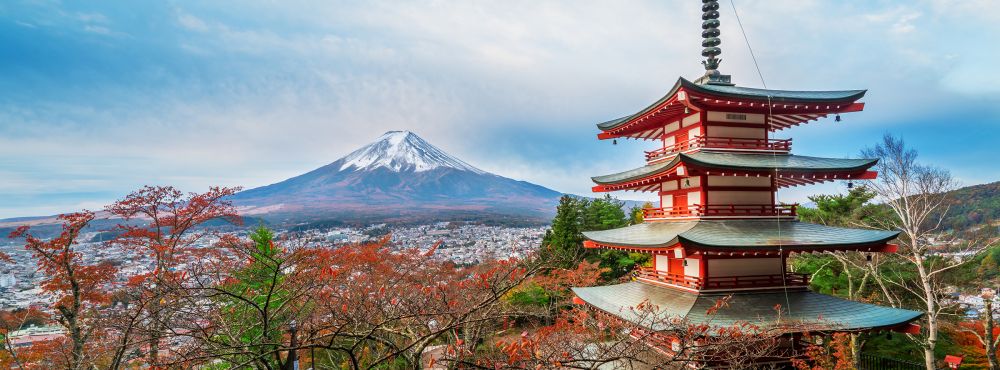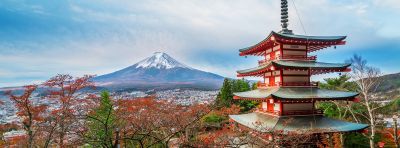

The Todai-ji Temple, a significant cultural landmark in Nara, is famous for housing a colossal bronze statue of the Buddha Vairocana. Known in Japanese as Daibutsu, this iconic effigy truly embodies the city's historical and spiritual significance. Constructed in the 8th century during the Nara period, Todai-ji served as the head temple of all provincial Buddhist temples of Japan. Its Daibutsuden, or Great Buddha Hall, is acknowledged as the world's largest wooden building, despite being only two-thirds of the original structure's size due to past reconstructions. Exploring Todai-ji is akin to embarking on a profound historical journey. You will encounter roaming deer, considered in Shinto to be messengers of the gods, and marvel at the intricate architecture and serene gardens surrounding the temple grounds. The temple complex also includes additional halls, a museum, and lovely walking paths.
Nara Park, or Nara Koen in Japanese, is a vast, picturesque public park in the heart of Nara, Japan. Spanning over 660 hectares, it is renowned for its enchanting natural beauty and the hundreds of freely roaming Sika deer, which are considered a natural treasure. Nara Park's verdant landscapes offer a tranquil retreat from the hustle and bustle of the city, with lush lawns, tranquil ponds, and enchanting forests. The park is populated by numerous historical temples and shrines, including Todai-ji, Kofuku-ji, and Kasuga-taisha, collectively designated as UNESCO World Heritage Sites as part of the 'Historic Monuments of Ancient Nara' listing. Visitors can purchase 'shika senbei' (deer crackers) to feed the tame deer, delight in the seasonal beauty of cherry blossoms in spring or vibrant foliage in fall, and immerse themselves in the park's serene atmosphere. Spending a day leisurely exploring Nara Park is a must-do for every visitor to the city.
Kasuga-taisha Shrine, established in the 8th century and dedicated to the deity responsible for the protection of Nara, is one of the city's most enchanting spiritual sites. The shrine is celebrated for its hundreds of bronze and stone lanterns that line the pathways leading to the main precinct, which are all donated by worshippers. During two annual Lantern Festivals in February and August, all lanterns are lit up, creating a mesmerizing sight. The shrine's unique architecture, with its vermilion-colored pillars and white walls, symbolizes a distinct style of Shinto architecture. Visitors to Kasuga-taisha can also explore the many auxiliary shrines within its forested domain, such as the Wakamiya Shrine. The tranquil ambiance, enhanced by the presence of deer, ancient trees, and the spiritual aura of the place, provides a reflective retreat and a deeper understanding of Japan's Shinto traditions.
Founded in 607 by Prince Shotoku, Horyu-ji Temple is a testament to ancient Japan's devotion to Buddhism and architectural prowess. It is widely recognized as possessing one of the world's oldest surviving wooden structures, the five-story pagoda and the Golden Hall, which encapsulate the essence of Asuka-period architecture. Designated as a UNESCO World Heritage Site, Horyu-ji is both an active center of worship and a treasure trove of early Japanese art and architecture. The temple complex includes over 2,300 important cultural and historical artifacts, some of which date back to the 7th century. Visitors to Horyu-ji will gain insight into the evolution of Buddhist art in Japan as they walk through the elegant grounds and marvel at the statue of Prince Shotoku, the temple's founder and a pivotal figure in Japanese history.
Stepping into the Naramachi district is like traveling back in time to the old merchant quarters of Nara. The area's narrow streets and traditional 'machiya' townhouses offer a glimpse into local life centuries ago. Visitors can explore the quaint shops, cafes, and museums nestled within these historic buildings. Naramachidouji, the central street, is flanked by the former residence of merchants and craftsmen, many of which have been converted into delightful galleries showcasing traditional crafts like Nara's famous 'nara ningyo' dolls. Exploring Naramachi provides a welcome contrast to the grandeur of Nara's temples, offering intimate encounters with the city's rich cultural heritage. A visit to the Nara Kogeikan, a craft museum, and the many boutique stores ensures visitors leave with unique souvenirs and memories.
Omizutori, also known as the 'Water-Drawing Festival,' is an annual series of events held at Todai-ji Temple's Nigatsu-do Hall every March. This Buddhist ritual, steeped in history and dating back over 1,250 years, is a fiery and spiritually captivating spectacle. The ceremony is a part of the repentance rituals of Shuni-e and culminates in the priests drawing sacred water from the temple's Wakasa Well, believed to have been consecrated by the priest Jichu, the festival's founder. The most visually spectacular event is 'Otaimatsu,' where giant torches are lit and held out from the balcony of Nigatsu-do, showering sparks over the crowd in an act that is believed to cleanse and purify spectators from sin. Attending Omizutori is a majestic experience that provides an authentic window into the ceremonial rites of Japanese Buddhism.
The Nara National Museum, located within Nara Park, is an art museum that is highly respected for its extensive collection of Japanese Buddhist art. Established in 1889, the museum's buildings themselves are impressive, featuring a blend of classical Japanese and modern architecture. The museum's prized possessions include delicate scrolls, sculptures, and ceremonial implements that span over 1,300 years of Buddhist art history. The central gallery's rotating exhibitions allow visitors to witness the depth and variety of the museum's holdings, while the new wings provide thematic and special exhibitions. Additionally, the museum hosts the annual Shosoin Exhibition, displaying treasures from the nearby Shosoin Imperial repository. For enthusiasts of art and history, the Nara National Museum offers an illuminating journey through the aesthetic and spiritual aspects of Japan's past.
Yoshikien Garden is a hidden gem located in Nara, offering a serene and picturesque setting that contrasts the grandeur of the city's historic temples. Named after the Yoshikigawa River, which runs alongside it, the garden consists of three distinct sections: a pond garden, a moss garden, and a tea ceremony flower garden. Each area has been meticulously maintained to reflect the subtle beauty of traditional Japanese landscape design. Visitors can enjoy the tranquillity as they stroll along the paths that meander through the carefully arranged flora, rock formations, and water features. The garden also provides an enchanting view during the autumn months when the maple trees ablaze with vibrant colors. Although smaller and less frequented than other Nara attractions, Yoshikien Garden is a tranquil retreat that affords a sense of solitude and harmony with nature.
Mount Wakakusa, also known as Wakakusayama, is a hill located behind Nara Park, offering stunning panoramic views of the city and its surrounding countryside. The modest climb to the peak is relatively easy, making it a popular spot for both locals and tourists. The grass-covered mountain is especially famous for the Wakakusa Yamayaki, an annual festival held in January where the grass on the hillside is set on fire. This dramatic and historical event is a sight to behold, illuminating the winter skyline with warm hues. On a regular day, hikers can enjoy a leisurely ascent up the gently sloping hillside, relax at the summit, and take in the breathtaking vistas. A visit to Mount Wakakusa provides a unique opportunity to enjoy the natural beauty of Nara from an elevated perspective and is a refreshing counterpoint to temple viewing.
The Nara Prefectural Government Office building houses an observatory on its rooftop, offering visitors an opportunity to view the city from a different angle. This lesser-known attraction is perfect for those seeking a panoramic glimpse of Nara without the physical effort of climbing Mount Wakakusa. From the observatory, one can see many of the city's iconic landmarks such as Todai-ji, the Five Story Pagoda of Kofuku-ji, and the lush expanse of Nara Park. It's an especially attractive destination during sunset when the city is bathed in a warm, golden light. The modern office building is located a short walk from some of Nara's main attractions, making it a convenient stop during a day of sightseeing. The observation deck gives visitors a fresh perspective and is an ideal spot for capturing memorable photographs of the ancient capital.
